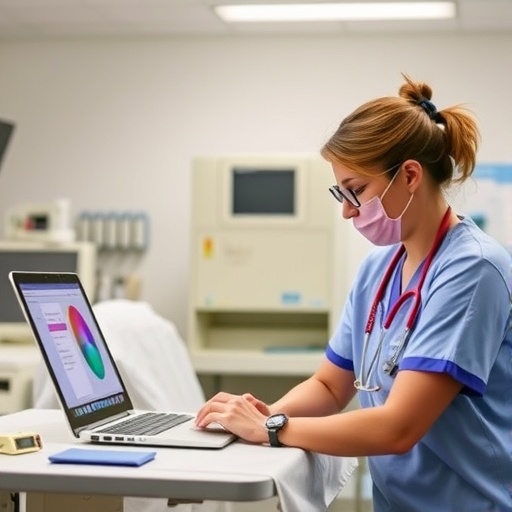It is becoming increasingly likely that humanity will have to learn to live with COVID-19. But that does not mean we should be letting our guards down or ignoring the way it spreads throughout the population.

Credit: Concordia University
It is becoming increasingly likely that humanity will have to learn to live with COVID-19. But that does not mean we should be letting our guards down or ignoring the way it spreads throughout the population.
As our understanding of the virus’s transmissibility increases, so too does the range of tools available to mitigate it. Among them is the City Reduced Probability of Infection (CityRPI), a web-based tool developed by Leon Wang. The associate professor of building, civil and environmental engineering at the Gina Cody School of Engineering and Computer Science came up with it alongside his PhD students Ali Katal and Maher Albettar. Originally unveiled in the fall of 2020, CityRPI — pronounced “City-R-Pi”— calculates the probability of COVID-19 infection through aerosol transmission in indoor spaces in Montreal.
In a new paper published in the journal Sustainable Cities and Society, Katal, Wang and Albettar show how their tool can be expanded to project this likelihood in cities across North America. The site’s scope grew as the initial project became better known across Canada and the United States and the initial development team began collaborations with other researchers.
CityRPI relies on technical data such as air exchange rates, ventilation and air filtration conditions provided by local users to determine transmission likelihood. Specific building types such as offices, university buildings or retail stores are added to make results even more customizable. So too are in-place mitigating efforts, for instance the wearing of facemasks, the presence of new air filtration systems, reducing time spent on location, opening windows and more. Data of daily COVID-19 cases is provided in real time.
This, the researchers say, can help health officials and the public compare strategies to curb indoor transmission risks as health restrictions loosen and in-person socialization resumes.
Different solutions for different buildings
Besides getting fully vaccinated, the wearing of facemasks is still the single most effective method of cutting down the transmission of COVID-19. But as Wang notes, there is a range of complementary strategies that can also be used to reduce the risk even further – but not all of them are equally effective in all types of buildings.
“As we see on the website, each building is different,” he says. “And so the risks associated with each are different. The effectiveness of different strategies should not be evaluated only in an absolute sense. We need to evaluate which strategies are most effective on a case-by-case, building-by-building basis. An air purifier may be very effective in a classroom, but much less so in a large indoor space like a concert hall.”
Wang does not think CityRPI’s potential ends with buildings. He envisions several other functionalities: one example is developing a method of calculating dynamic mitigation and risk assessment based on an individual’s daily movements, allowing them to identify potential exposure during their daily commute; another is using public data to assess CO2 levels and report ventilation conditions in local schools. It can also be adapted to track other airborne viral transmissions.
“The website can be extended to provide information not only about COVID but also, for example, influenza,” he says. “The methodology is similar. We would be able to provide some guidelines and inputs for those who want to reduce their chances of catching the flu or other airborne diseases.”
This research was supported by the Natural Sciences and Engineering Research Council of Canada and the Advancing Climate Change Science in Canada Program.
Read the cited paper: “A real-time web tool for monitoring and mitigating indoor airborne COVID-19 transmission risks at city scale”
Journal
Sustainable Cities and Society
DOI
10.1016/j.scs.2022.103810
Method of Research
Computational simulation/modeling
Subject of Research
People
Article Title
A real-time web tool for monitoring and mitigating indoor airborne COVID-19 transmission risks at city scale
Article Publication Date
3-Mar-2022
COI Statement
The authors declare that they have no known competing financial interests or personal relationships that could have appeared to influence the work reported in this paper.




